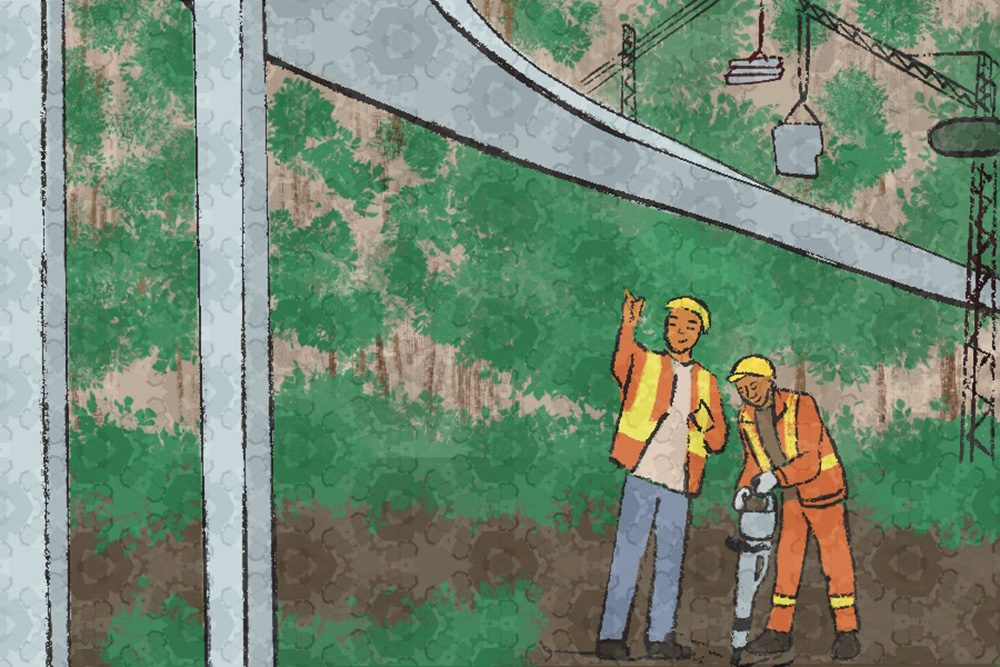MEXICO / CASE STUDY
Partnerships Are Collectivizing Hometown Remittances for National Development
Government-matched giving by diaspora hometown associations has scaled collective investment in local development in Mexico

Mexico, home to over 130 million people, is the second-largest economy in Latin America with a GDP of USD 1.85 trillion. Achievements toward the 2030 SDG agenda in Mexico are promising, but uneven. The country has achieved significant gains in poverty reduction, yet progress is stagnating on climate action and peace, justice, and strong institutions. The government of Mexico has long recognized the power of its diaspora to help advance social development and economic growth. The Mexican diaspora is almost entirely concentrated in the United States—relatively unique among global diaspora communities. First-generation Mexican diaspora members (individuals born in Mexico) alone in the U.S. numbered nearly 11 million in 2023. Through structured programs, the government has moved diaspora giving by this U.S.-based diaspora beyond private remittances and toward coordinated public works and community development.
Mexico is the second-largest recipient of remittances in the world, receiving USD 63.3 billion in 2023—roughly 7.5 percent of global remittance flows. In addition to typical remittances, collective remittances or diaspora philanthropy—giving meant to foster more broad-based social and economic development rather than benefit individual connections—are common and often channeled through migrant hometown associations (HTAs). The Mexican government has further collectivized the impact of this giving by formalizing the role of HTAs in national development, thus pairing personal giving with institutional support. Other actors also play a key role in engendering diaspora philanthropy, including a strong network of community foundations along the U.S.-Mexico border, private-sector actors, and HNWIs.

Matching schemes and government-led programs institutionalize diaspora giving at multiple levels
Mexico’s multi-tiered approach to diaspora engagement includes federal, state, and municipal partnerships with migrant communities abroad. The landmark program is the 3×1 program, through which every dollar contributed by a diaspora HTA is matched by three dollars from federal, state, and local governments. Since its launch, the program has funded thousands of public works, including roads, schools, and potable water systems—particularly in rural, underserved areas. By blending community ties with public financing, 3×1 has transformed hyper-local giving into large-scale development infrastructure.
Private-sector engagement has amplified the impact of the 3×1 program. Through the Western Union 4+1 model, Western Union adds a fourth dollar (up to USD 25,000) to the traditional 3×1 match, supporting productive diaspora-led projects. The 1×1 program weaves collective community investment into support for individual diaspora members. Founded in 2009, it matches individual diaspora entrepreneurs’ funds for their business projects up to USD 25,000. The entrepreneurs pay back their loans not in cash but through a required social investment via the 3×1 program.
Knowledge transfer from successful members of the diaspora scaffolds onto capital-based initiatives. Founded in 2005 by the Secretariat of Foreign Relations, the Mexican Talent Network links high-skilled diaspora professionals to innovation, entrepreneurship, and education partnerships in Mexico, in collaboration with CONACYT and U.S.–Mexico science foundations.
Though significant portions of the Mexican diaspora are socioeconomically disadvantaged, compared with many other diaspora communities in the U.S.—facing discrimination and longstanding structural barriers to naturalization—HNWIs nonetheless play a central role in diaspora-driven development in Mexico. In recent years, HNWIs in the Latino diaspora, including the Mexican diaspora, are increasingly giving to support development at home.

Mexico’s model blends local ownership with national coordination, but opportunities remain to move beyond remittances
Despite strong frameworks, Mexico still faces challenges in shifting from remittances to philanthropic capital. A 2021 report by the US-Mexico Foundation emphasizes the need for more deliberate policies and platforms to unlock the full development potential of migrant and diaspora contributions. This includes not only strengthening digital infrastructure and reducing transaction costs but also creating investment vehicles that meet regulatory standards while being accessible to a wider range of diaspora actors. More consistent data on who diaspora members are—their willingness to invest, preferred mechanisms for investment, and typical investment amounts—are essential for designing effective, scalable giving opportunities beyond traditional hometown associations. To fully harness diaspora giving, new policies and platforms are needed to improve coordination, reduce transaction costs, and unlock new forms of migrant investment. Strengthening digital infrastructure, streamlining cross-border financial flows, and expanding giving options beyond HTAs could help bring in a wider and more diverse set of donors, including younger generations and second-generation diaspora members.
Still, Mexico’s 3×1 model remains one of the most ambitious and replicable global examples of how governments can institutionalize diaspora engagement. By combining personal ties to place with co-investment from the public and private sectors, Mexico has transformed hometown giving into a scalable tool for inclusive, locally anchored development. To build upon this model, Mexico could develop additional investment channels, better coordination, and improved data, to convert rising remittance flows—now exceeding USD 60 billion annually—into a powerful source of long-term, economic transformation. Mobilizing this capital with stronger policy coordination and expanded partnerships—from private-sector actors to diaspora-led funds and philanthropic institutions—could position Mexico not only as a global leader in diaspora engagement but as a model for leveraging transnational identity into long-term, inclusive development.
